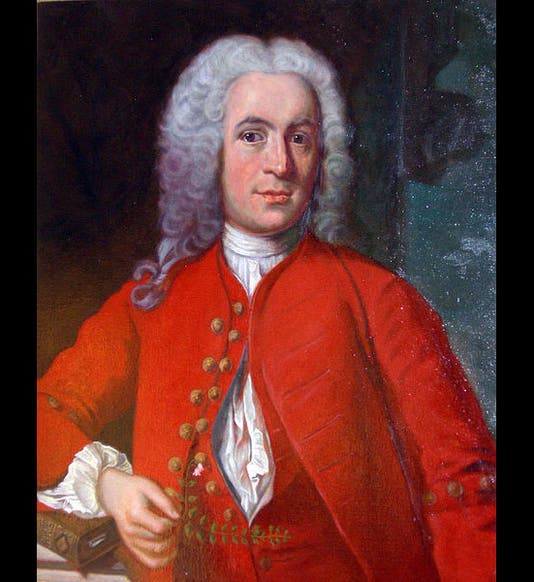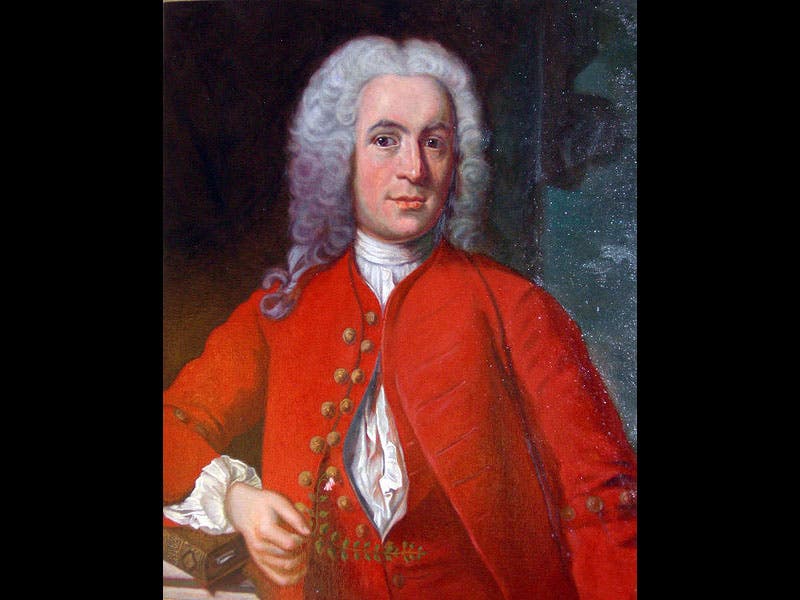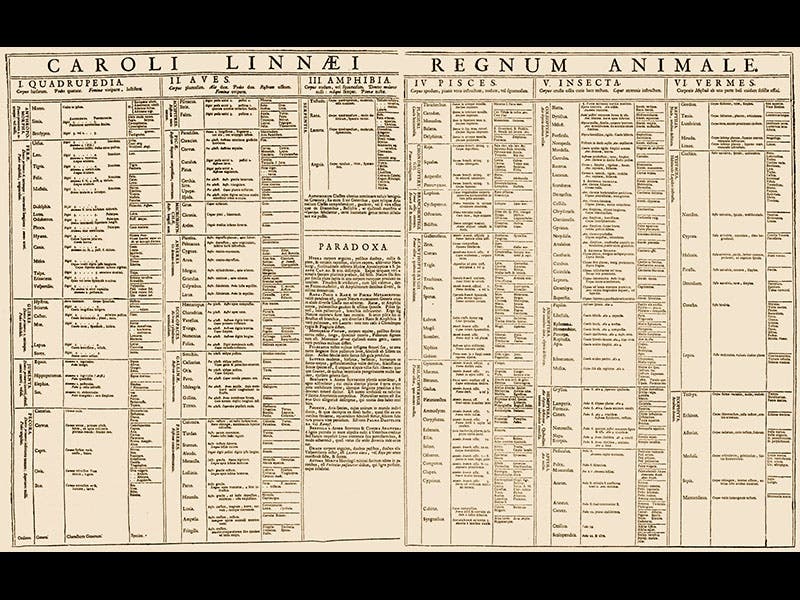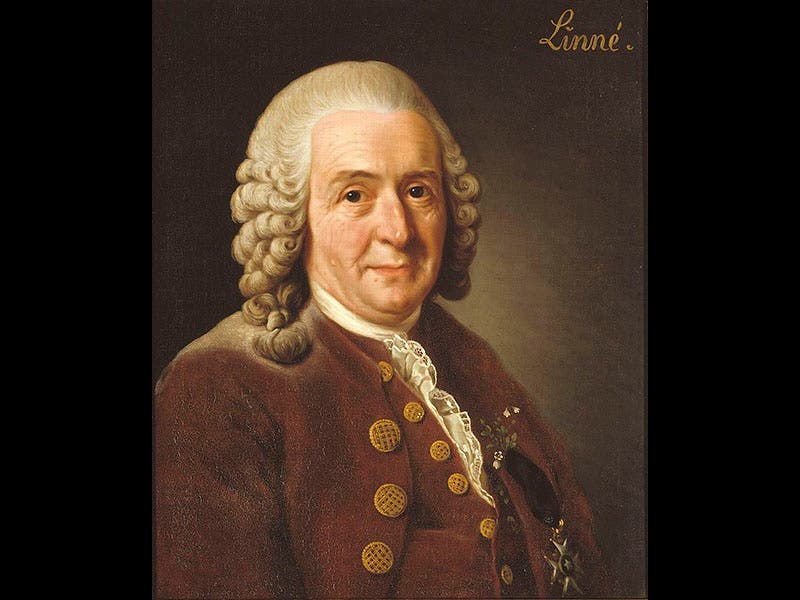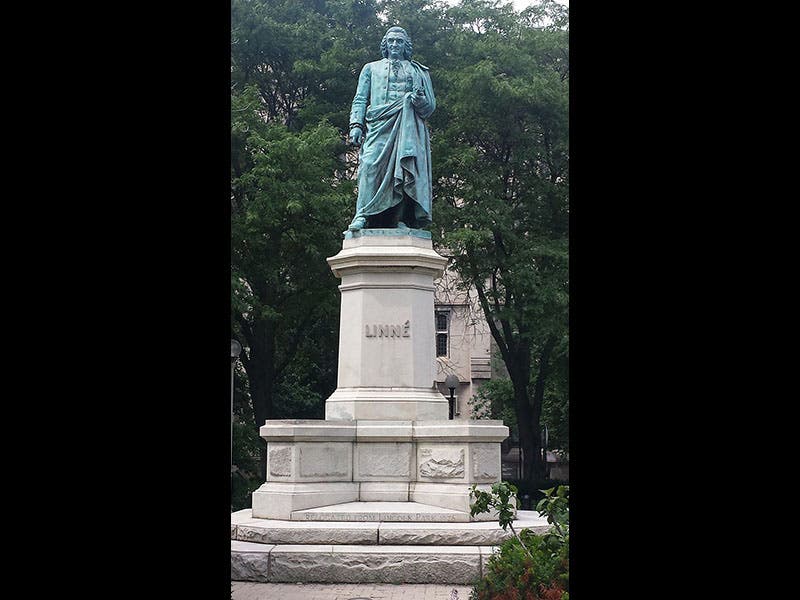Scientist of the Day - Carl Linnaeus
Carl von Linné, a Swedish botanist better known as Carl Linnaeus, died Jan. 10, 1778, at age 70. In 1735, Linnaeus published a tall, slim pamphlet of 14 pages called System naturae--The System of Nature (second image). Here, in tabular form, he divided up the three kingdoms of nature--animal, plant, and mineral--into classes, orders, genera, and species. The animal kingdom occupies just two facing pages (third image), but here, for the first time, humans take their place in the order of Anthropomorpha (soon to be renamed Primates), with the generic name Homo and the specific name sapiens. Similarly, dogs, raccoons, tigers, and ferrets find a home in the order of Ferae (to be renamed Carnivora) and squirrels, porcupines, and rabbits share the order Glires, or Rodents. Interestingly, in this first edition, Linnaeus has an entire section, seemingly an order in itself, that he calls Paradoxa. These contain all the animals that don't fit or are too poorly known, such as the phoenix, or mantichore, or the Rana piscatrix--the fishing frog. In later editions, Linnaeus sorts this all out, until by 1758, the 10th edition of the Systema has expanded to two fat volumes with descriptions of thousands of species. The first edition of 1735 is very scarce and we do not have it in our collection. But the Library does own the 10th edition, which is really the most important, since it is officially the starting point for all modern zoological and botanical nomenclature. We displayed our copy in the 2009 exhibition, The Grandeur of Life.
The two portraits show Linnaeus at age 32 (first image) and 67 (fourth image). There are many statues of Linnaeus scattered about; this one (fifth image) is on the campus of the University of Chicago.
Dr. William B. Ashworth, Jr., Consultant for the History of Science, Linda Hall Library and Associate Professor, Department of History, University of Missouri-Kansas City. Comments or corrections are welcome; please direct to ashworthw@umkc.edu.

